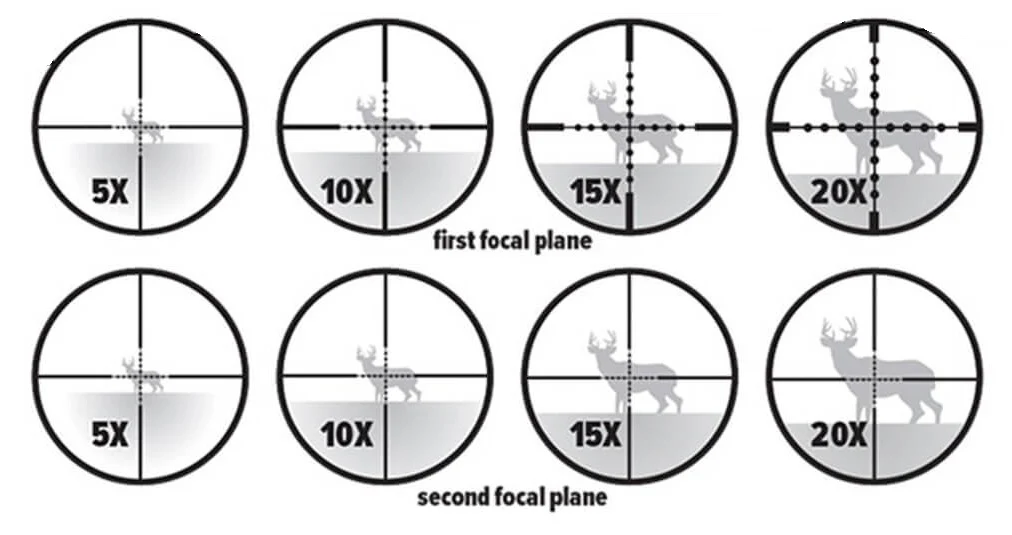First Focal Plane vs. Second Focal Plane Scopes | Optics Guide
When choosing a rifle scope, one of the most important decisions you’ll face is whether to go with a First Focal Plane (FFP) or a Second Focal Plane (SFP) design. This choice affects how the reticle behaves as you change magnification - and it can have a big impact on how you use your scope, especially for long-range shooting or tactical applications.
The main difference lies in the position of the reticle within the scope’s optical system. In a First Focal Plane scope, the reticle grows and shrinks as you zoom, keeping its proportions relative to the target. This lets holdovers, range estimates, and ballistic calculations stay accurate at any magnification.
In contrast, a Second Focal Plane scope has the reticle behind the magnification lens. The reticle stays the same size no matter the zoom, which many shooters find easier at lower magnification. However, range/holdover markings are only accurate at one specific magnification—usually the highest.
Understanding the difference between FFP and SFP scopes will help you choose the right optic for your needs, whether you're hunting, target shooting, or engaging in precision long-range work.

First Focal Plane (FFP) Scopes
Pros:
- • Accurate holdovers and ranging at all magnifications (reticle subtensions stay true at any zoom level)
- • Ideal for long-range and tactical shooting
- • Great for dynamic environments (zoom without losing reticle scale accuracy)
- • Versatile for shooters who use reticle markings for adjustments
Cons:
- • Reticle can be hard to see at low magnification (very small/thin when zoomed out)
- • Can be more expensive (more complex to manufacture)
- • More cluttered at high magnification (reticle may appear thick or busy)
Second Focal Plane (SFP) Scopes
Pros:
- • Reticle size stays the same at all magnifications (easy to see at low zoom)
- • Often simpler and less expensive
- • Ideal for hunting or casual shooting (set distances with minimal holdovers)
- • Cleaner sight picture at all magnification levels (simpler reticles)
Cons:
- • Reticle subtensions are only accurate at one magnification (usually the highest power)
- • Holdovers and ranging can be unreliable unless you're at that exact zoom level
- • Less suited for advanced or competitive long-range shooting
Which One Should You Choose?
- • Choose FFP if you're doing precision shooting, long-range, or tactical work, and use your reticle for holdovers or ranging.
- • Choose SFP if you prefer a simple, consistent sight picture, and mainly shoot known distances where adjustment isn’t required.
Choosing between FFP and SFP scopes depends on how you plan to use your rifle optic. FFP reticles scale with magnification, keeping holdovers/ranging accurate at any zoom—great for long-range/tactical shooting. SFP reticles stay a constant size for a simpler, clearer view, though their markings are precise at only one zoom. Understanding these differences helps you match the right scope to your needs.






